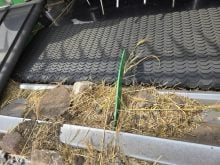FARGO, N.D. – What is the strategic thinking behind a 1,350-bushel grain cart when a semi-tractor trailer holds only 1,000 bu?
Jerry Sandbulte says it’s all about harvest efficiency.
According to the sales representative for Demco grain carts, the mammoth investment in combines and semis dictates the harvest operation must run at peak efficiency.
A producer wastes money each time a semi is driven back to the yard with a light load or sits waiting for that last 150 bu. needed to make up a full load.
Read Also

More work wanted on removing red tape
REGINA — Canadian farmers risk falling further behind competitors if two main federal agencies don’t become more efficient and responsive…
It’s the same situation when a $300,000 combine sits waiting with a full tank and the grain cart is also full to the brim.
“Whether it’s your own semi with your wife driving or a custom operator, you don’t want to pay for a semi that’s carrying only 850 bu. You want it running at peak efficiency with a full load every trip,” Sandbulte said.
“If you’re working with a 1,000 bu. cart, you have to fill it right to maximum capacity every time to make a full semi load. But it seldom works out that way. And when you try filling any cart to maximum capacity, you always risk spilling grain on the ground.”
Sandbulte said a high capacity cart allows the tractor driver with the cart to service more combines without the limit determined by the capacity of the semi. Once he has his 1,000 bushels, he has the option of heading off to one more combine before going to the semi trailer to empty.
The high capacity grain cart can be compared to a nitrogen accumulator on a suspension system. It provides that extra reserve to cushion the bumps and dips between the combine and the semi.
However, there’s no point investing in a high capacity cart unless it can be unloaded quickly. The Demco 1,350 has a 22-inch diameter auger that empties the entire 1,350 bu. in 150 seconds, or 640 bu. per minute.
To achieve those performance numbers, the cart requires two hydraulic ports with a total capacity of 35 gallons per minute at 2,200 p.s.i.
With all functions hydraulically driven, there are no belts or pulleys in the system.
Maximum capacity
The cart is equipped with standard load sensors so the tractor operator knows he’s giving the semi the correct maximum load without exceeding legal road limits.
“The three main functions on the cart are electric over hydraulic with a hand held control that’s wired into the tractor cab. You want the tractor driver to stay up in the cab where he belongs, not down on the ground,” Sandbulte said.
“He keeps his eyes on the whole process. The trailer gets a good even load front to back and there’s no spilling on the ground.”
He said keeping the tractor operator in the cab also gives him a better view of the grain flowing out of the tube.
As well, the auger position helps the operator keep track of what’s happening.
“We have an adjustable spout at the discharge end of the auger tube. It rotates 110 degrees and extends nearly eight feet forward from the box, so that helps the tractor driver distribute the grain evenly over the truck.”
The auger is located at the corner instead of the front of the cart, which lets the operator unload the first 700 bu. solely with gravity feeding the auger.
The operator doesn’t engage the drag-line until the front half of the cart is empty. Sandbulte said it’s important that the dragline not engage automatically when the auger starts.
“The more you run a dragline, the more grain grinding you do down in the cart and the more grain damage you do. Everything we did on the 1,350 is intended to keep dragline operation to an absolute minimum. That’s one reason it’s on a separate control.
“Also, we have a 45 degree turn on the auger instead of a 90 degree turn. It’s all designed to be very gentle on the grain.”
The auger extension connects with a positive drive connection when it is brought into the working position. Steel cogs engage so every rotation of the lower auger section must equate to one rotation of the extension. There is no slippage.
Vertical panels have been eliminated in the cart body to help facilitate a gentle gravity feed. The front, back and sides are all sloped so grain slides to the bottom of the cart.
Empty weight of the cart is 17,200 pounds and full weight is bushel weight multiplied by 1,350.
Wheels important
Demco engineers decided that carrying so much weight and still keeping everything gentle required innovations in the undercarriage.
“Other big carts are built with staggered dual wheels,” Sandbulte said.
“We felt staggered wheels cause too much scraping and scuffing and digging in the soil when you make your turns. You can feel the resistance turning with staggered wheels.
“When you’re turning the 1,350 cart, it feels like you’re turning with singles. We call it an oscillating in-line setup. It’s a patented design and we’re the only company with anything like this.”
The 1,350 has a tandem walking mechanism between the duals. Looking at each pair of wheels is deceiving because they look like conventional duals mounted side by side.
However, the walking mechanism within each pair of wheels allows each wheel to move up and down independent of the other.
The company has established a dealer network in Western Canada but hasn’t yet set a price in Canada for the big cart. The machine is also available on rubber tracks for those wanting additional flotation.
For more information, contact Sandbulte at 712-725-2311 or visit www.demco-products.com.

















